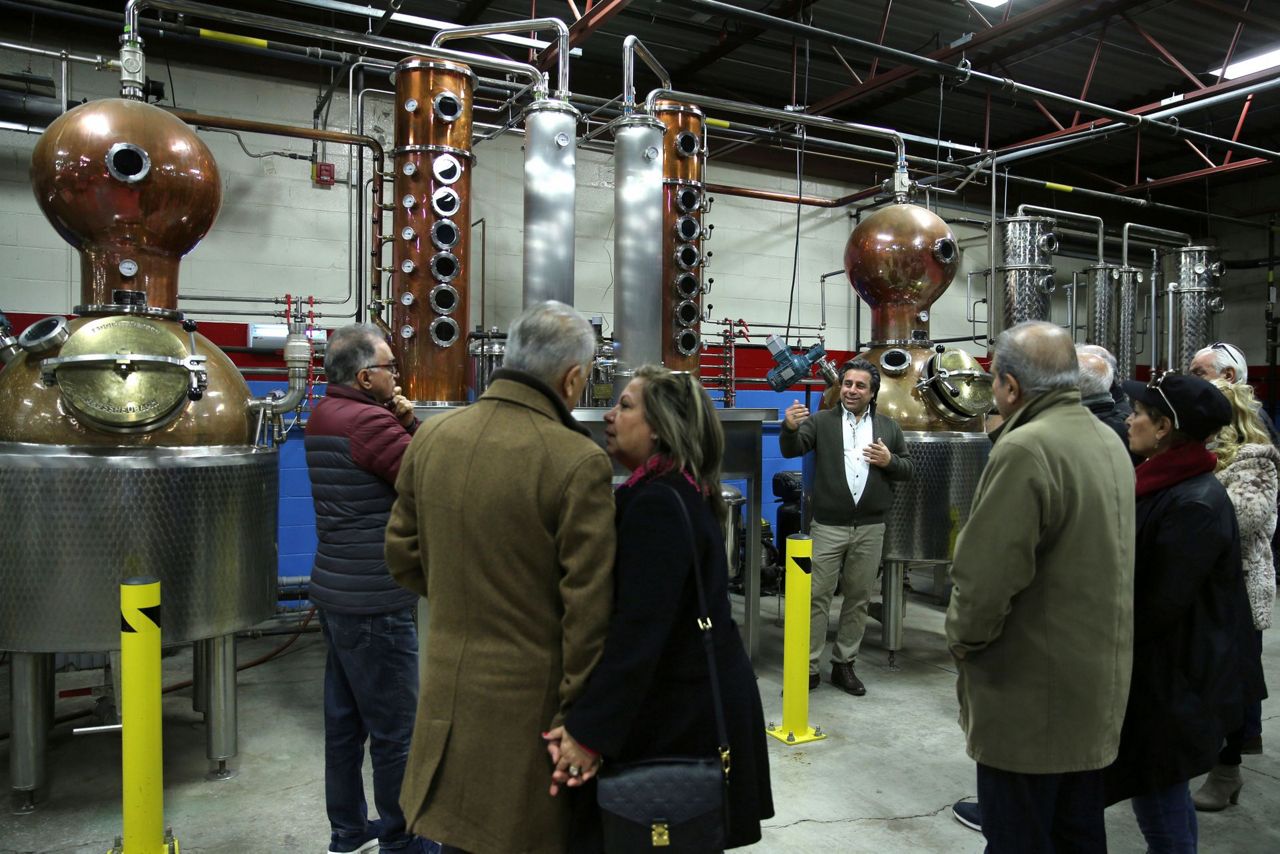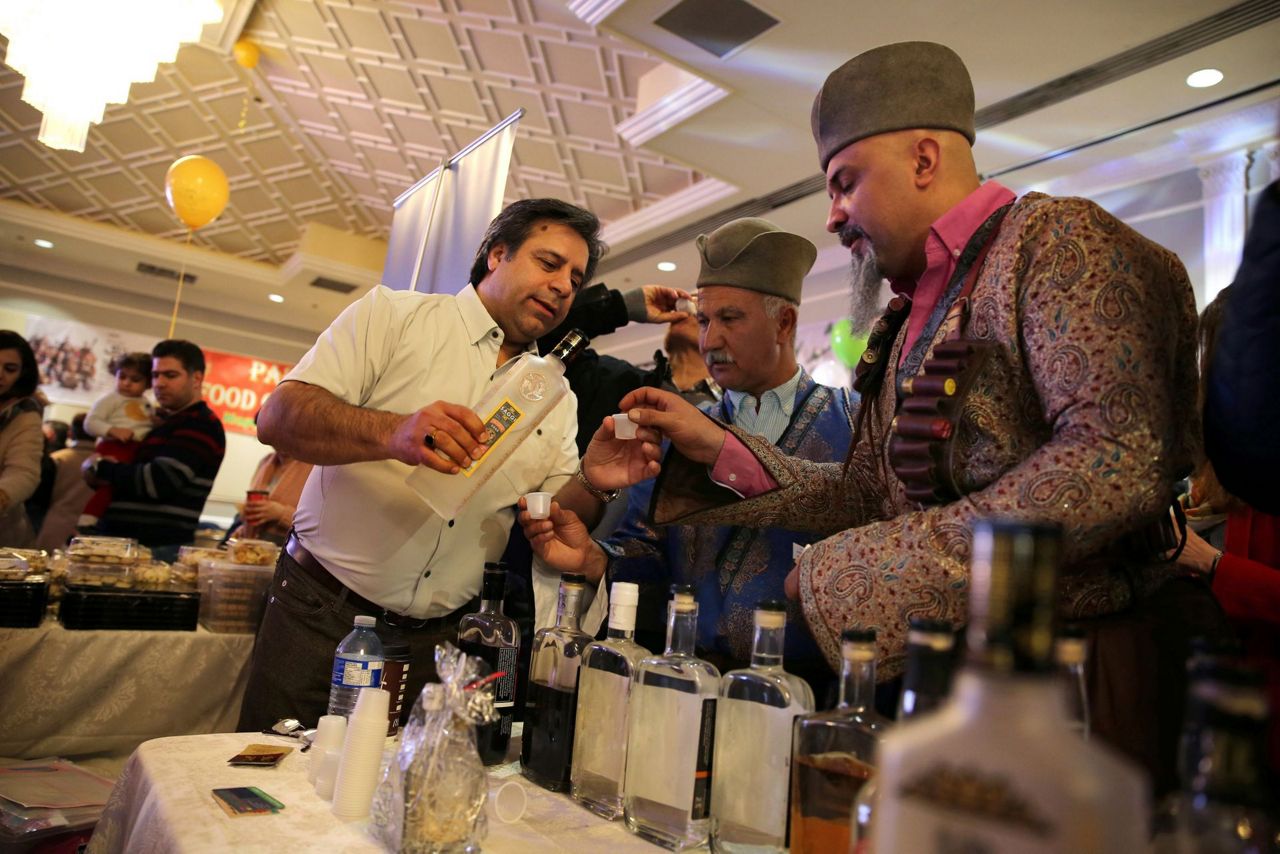PETERBOROUGH, Ontario (AP) — Long before its teetotaler Islamic clerical rulers banned the consumption of alcohol, Iran had a vibrant drinking heritage.
In fact, as early as 550 BC, King Cyrus the Great and his Persian lawmakers were said to get drunk before deliberating important decisions and then debate them again the next day while sober. If they still agreed, the new law was passed. It spawned the Persian saying "Masti O Rasti," meaning "drunkenness and truthfulness."
The motto is printed on the backside of the bottles of "Arak Saggi," a top-notch triple-distilled Arak created by an Iranian ex-pat in Canada looking to resurrect his homeland's alcohol culture.
"I was looking for something extraordinarily unique and I found the slang of a traditional popular Arak," said Bruce Khabbazi, a 50-year-old Iranian-Canadian entrepreneur who established the Persian Empire Distillery in 2006. "I felt the need to give this drink an identity as well as originality. My task became Introducing Arak Saggi to the world as a classic alcoholic drink of Iranians."
Arak Saggi means "Doggy Arak," in a nod to the nostalgic spirit of the same name that was popular in Iran in the 1950s and featured a dog on its label. Khabbazi figured it would loom large in the pre-1979 Islamic Revolution memories of many Iranians.
Born in Shiraz to a family with more than 125 years in the food industry, Khabbazi started his own chewing gum packaging business when he was just eight years old. At 16, he fled Iran to avoid fighting in the Iran-Iraq war and because he said he saw no future for young Iranians after the revolution. After a harrowing journey, in which he was briefly taken by human traffickers in Pakistan and then dyed all his exposed hair blond to pose as a Westerner, he made his way to Canada. He landed in Vancouver with just $50 in his pocket and applied for asylum.
In Canada, he changed his name from Behrouz to Bruce and went to college before getting back into the food business. Eventually he shifted into alcoholic beverages and established his Persian Empire Distillery as just the second craft distillery in Ontario. His first product was pomegranate liquor. He now showcases three brands with the combined 40 products, which are available in the U.S., Canada, Europe and Australia.
Perhaps his most prized concoction is Arak Saggi, a liquor made of raisin paste imported from California that has a taste similar to grappa, the Italian grape-based brandy. Traditional Arak — the translucent, white and anise-flavored liquor similar in taste to the Greek ouzo or Turkish raki — is very popular in the Middle East.
Khabbazi lives with his wife and two daughters in Peterborough, Ontario, about 125 kilometers (78 miles) northeast of Toronto, where his distillery and liquor shop are located. He hasn't been back to Iran since fleeing in 1987, though he hopes to visit one day.
When he first got his liquor license in Canada, Khabbazi said he was told that "Persians are Muslim, and they don't drink."
"This was to me a lack of knowledge about Iranian culture," he added. "I noticed a big challenge ahead of me and planned to prove them wrong."
Alcohol consumption is forbidden under Iran's Islamic Shariah law and it is illegal for the majority of Iranian Muslims. The crime is typically punishable by lashes and cash fines.
Still, bootleg alcohol can be found in underground markets. Iran's National Emergency Services says 27 people died last September and more than 300 were hospitalized after drinking tainted bootleg.
Iran has a rich history in wine making. Six ancient clay jars were discovered by a team of American archaeologists at a site in the Zagros mountains in northern Iran in 1968 and chemical analysis on one of them revealed that a dark stain at the bottom was wine residue. The jars date back to the Neolithic period more than 7,000 years ago and provide the first scientific proof of wine production in the region in antiquity.
The 1979 Islamic Revolution put an end to that and sent the liquor culture deep underground. For several years, Armenians were the main distributers of home-made Arak in Iran until the foreign-labelled bottles started to be smuggled in.
Here's a gallery of images of Arak Saggi from AP's Persian Gulf Photo Editor Kamran Jebreili.
___
Follow Kamran Jebreili on Twitter at www.twitter.com/KamranJebreili ; follow Associated Press photographers and photo editors on Twitter at http://apne.ws/15Oo6jo .
Copyright 2019 The Associated Press. All rights reserved. This material may not be published, broadcast, rewritten or redistributed.












